#29 in Vietnam
Bánh Canh: Basic Information
Pronunciation
Alternative Name(s)
Dish Type
Course
Mealtime
Popular Bánh Canh Variations
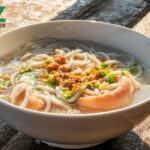
Bánh Canh Giò Heo

Bánh Canh Cá Lóc
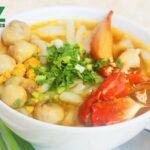
Bánh Canh Cua
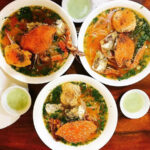
Bánh Canh Ghẹ

Bánh Canh Hẹ
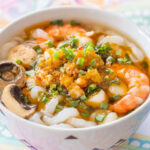
Bánh Canh Tôm
Bánh Canh: Ingredients and Preparation
Main Ingredients
Main Cooking Method
Preparation Process
Bánh Canh: A Deep Dive
Cultural Significance
Taste
Texture
Aroma
Color
Serving Style
Serving Temperature
Accompaniment
Occasions
Seasons
Special Diets
Calories
Popularity
Popular Similar Dishes
- Udon
- Cao Lầu
- Garak-guksu
Popular Dining Area
Bánh canh is a Vietnamese noodle soup consisting of thick noodles, protein-rich toppings, and herbs in a rich bone broth. It is a famous breakfast dish, street food, and comfort food in the country, especially in the southern and central regions.
Bánh canh originated in Southern Vietnam in the early 20th century and eventually spread to other regions of the country. Nowadays, many Vietnamese provinces are famous for their interpretation of noodle soup, notably Tay Ninh, Ninh Thuan, Thua Thien Hue, Phu Yen, etc.
Keep on reading to learn more about bánh canh, such as its main ingredients, popular variations, and the advantages and disadvantages of eating it. I will also provide you with answers to common queries about bánh canh and suggest similar dishes.
Key Points
Bánh Canh Images
What Is Bánh Canh Made With?
Bánh canh consists of the following 4 kinds of ingredients:
| ingredients | Description |
|---|---|
| Noodles | The 3 main noodle varieties for bánh canh are: Bột gạo: soft, white noodles made exclusively from rice flour. Bột lọc: chewy, slightly translucent noodles made from rice and tapioca flour. Bột xắt: thick noodles made from rice flour and having strands of uneven width and thickness. |
| Toppings | Varies significantly between different versions, such as thickly sliced pork, seafood, poultry, meatballs, fish cakes, etc. |
| Herb garnish | Scallions and chervil |
| Broth | Main ingredients: pork knuckles or trotters, tapioca flour (as a thickening agent), various Vietnamese condiments (such as fish sauce) Options ingredients: seafood, poultry, mushrooms, or vegetables (especially daikon) |
In addition, some recipes may feature add-ons like pig blood curd and fried shallots. You have learned about the main ingredients of bánh canh, so let’s check out the many variations of this Vietnamese noodle soup.
What Are Popular Bánh Canh Variations?
There are 15 famous bánh canh variations in Vietnam as shown below:
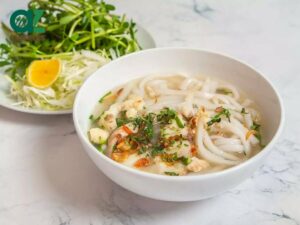
Bánh Canh Cá Lóc
Especially popular in the provinces of Quang Binh, Quang Tri, and Thua Thien Hue
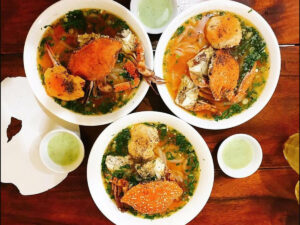
Bánh Canh Ghẹ
Often features whole flower crabsPopular in coastal provincesUsually has a spicy flavor
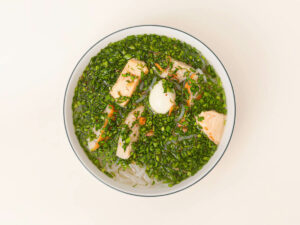
Bánh Canh Hẹ
Specialty of Phu Yen provinceHas a green color derived from sliced chive leaves
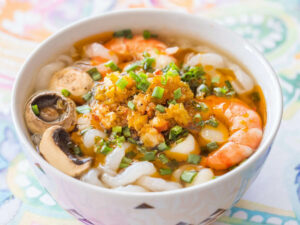
Bánh Canh Tôm
Can have various add-ons, such as mushrooms, quail eggs, carrots, daikons, etc.
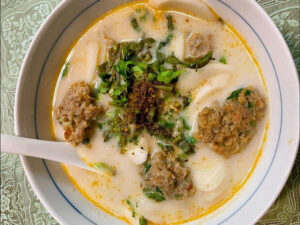
Bánh Canh Nước Cốt Dừa
Has a white, creamy coconut-based brothCan be made with seafood
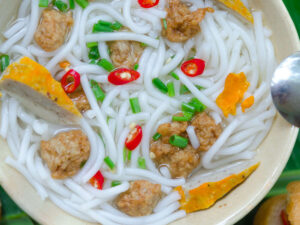
Bánh Canh Chả Cá
Specialty of Nha Trang city
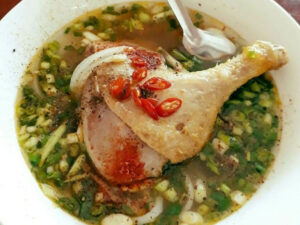
Bánh Canh Vịt
Version of bánh canh made with duck meat
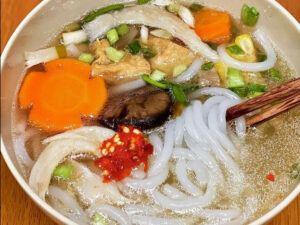
Bánh Canh Chay
Vegan version of bánh canh

Bánh Canh Bột Xắt
Has sliced noodles of uneven sizesCan be made with various toppings
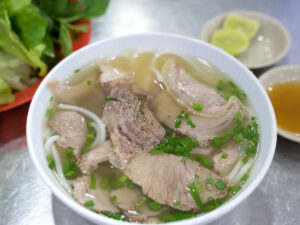
Bánh Canh Trảng Bàng
Specialty of Trang Bang townPaired with bánh tráng phơi sương (dew-wetted rice paper) and a dipping sauce based on fish sauceGarnished with chervil and fried shallotsServed in two bowls: one for the noodles and broth and one for the meat and herbs
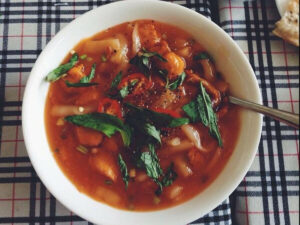
Bánh Canh Nam Phổ
Specialty of Nam Pho villageFeatures elaborately made noodles served in a thick brothFlavored with mắm ruốc (fermented shrimp paste)The meat is pounded and mixed with the noodles
After learning about those bánh canh variations, allow me to introduce you to the pros and cons of consuming this Vietnamese noodle soup.
Pros and Cons of Eating Bánh Canh
Bánh canh has the following strengths and weaknesses.
Pros
Cons
Many people find bánh canh to be similar to phở in many aspects, including the upsides and downsides. But the two Vietnamese dishes are highly different from one another; let me show you how.
What Are the Differences Between Bánh Canh and Phở?
Bánh canh stands out from phở in the following 5 aspects: origin, noodle type, broth, toppings, and popular variations.
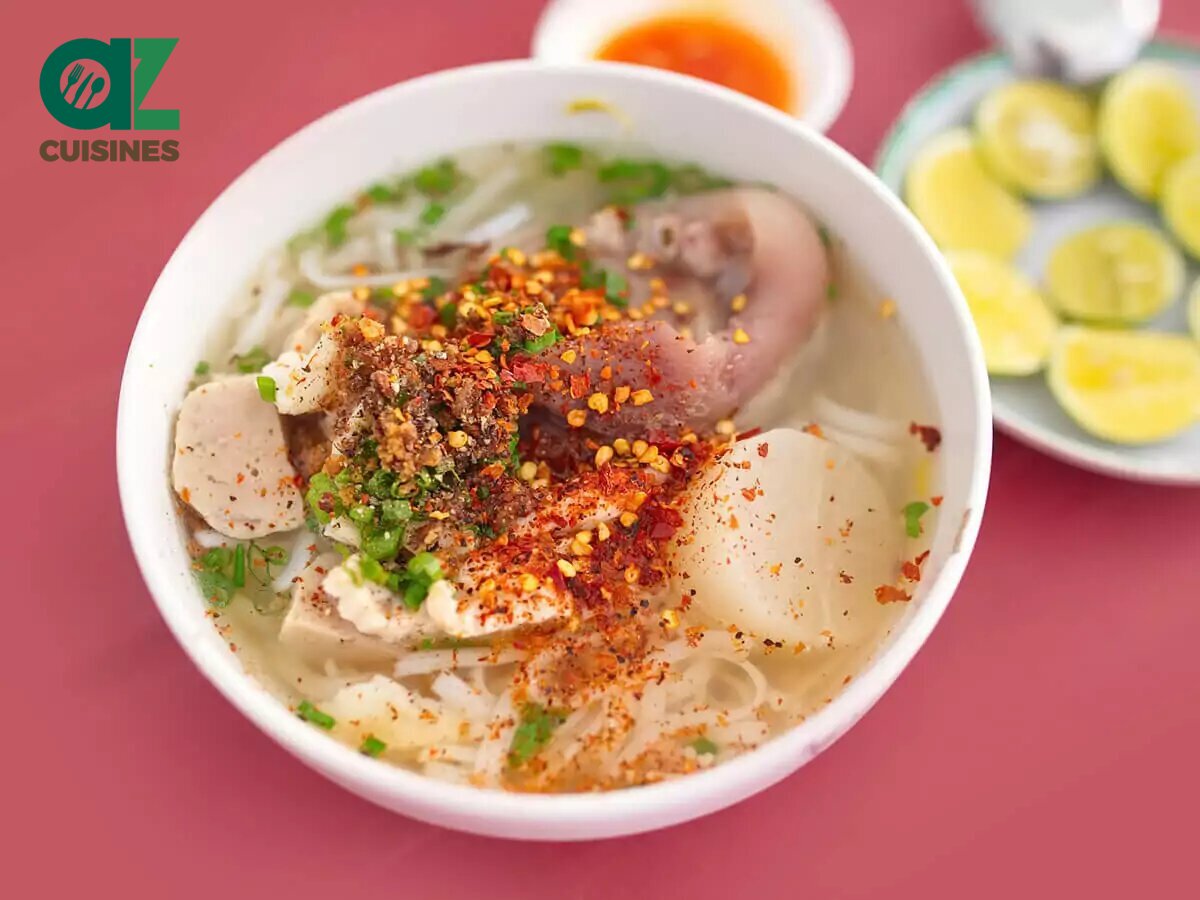
Bánh Canh
Origin: Southern and Central Vietnam
Noodle type: Thick, chewy rice noodles that may include tapioca flour
Broth: Hearty broth usually made from pork bones or pork knuckles
Toppings: Various, such as pork, poultry, seafood, and vegetables
Popular variations: Bánh canh giò heo (with pork knuckles), bánh canh cá lóc (with snakehead fish), bánh canh Trang Bang

Phở
Origin: Northern Vietnam
Noodle type: Thin, flat rice noodles
Broth: Clear, aromatic broth typically made from beef or chicken bones
Toppings: Different cuts of beef or chicken
Popular variations: Phở bò (beef phở), phở gà (chicken phở)
You know almost everything about bánh canh now, but check out the FAQs section to complete your understanding of this Vietnamese specialty.



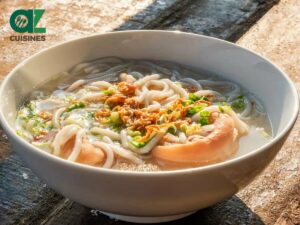

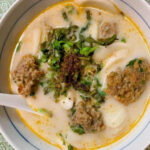
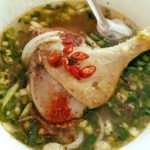
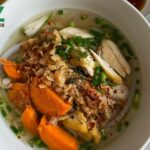
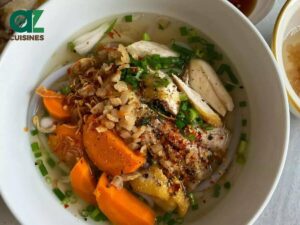
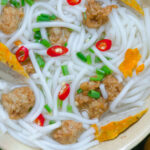


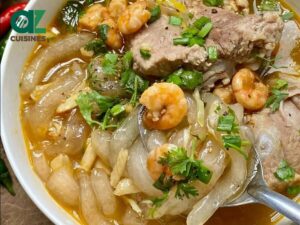
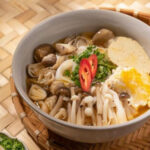
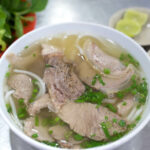
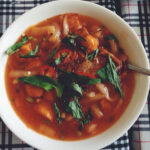


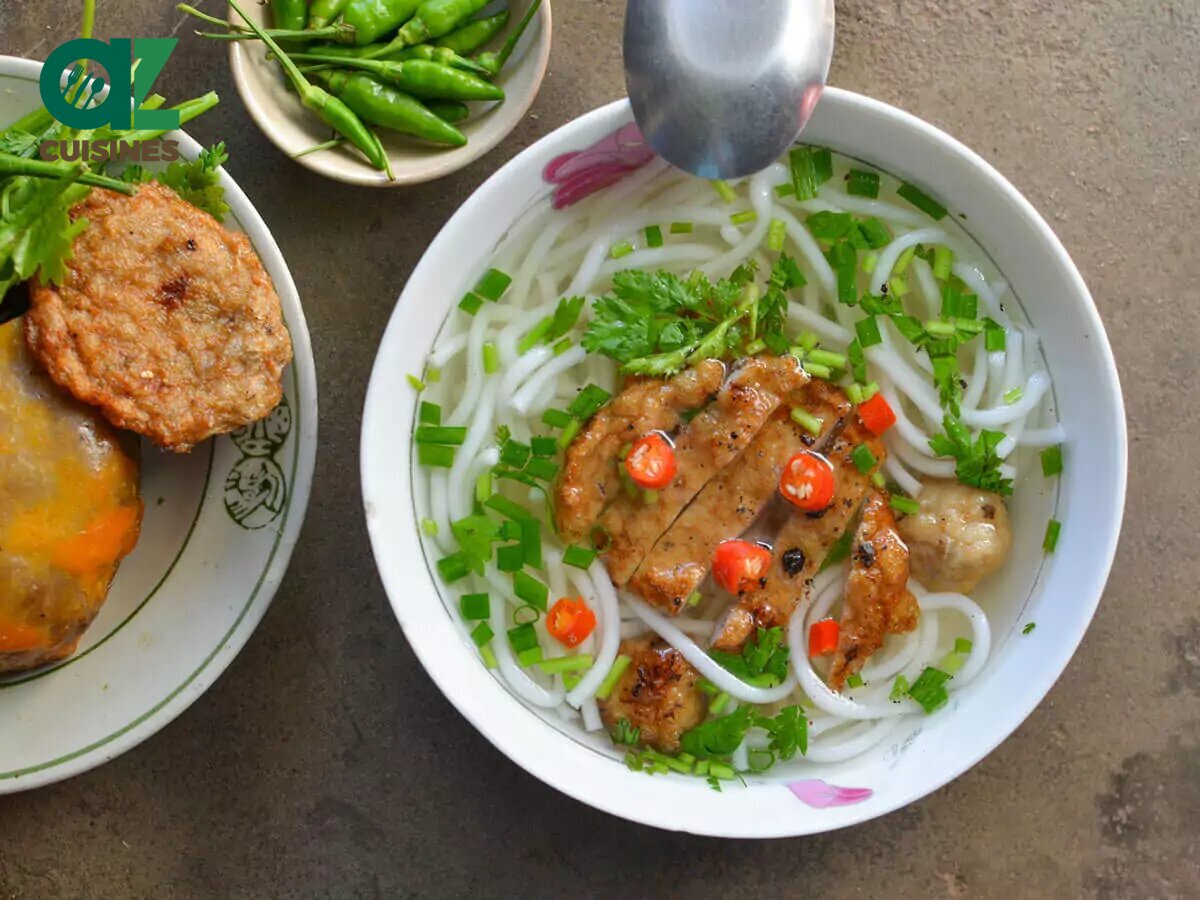
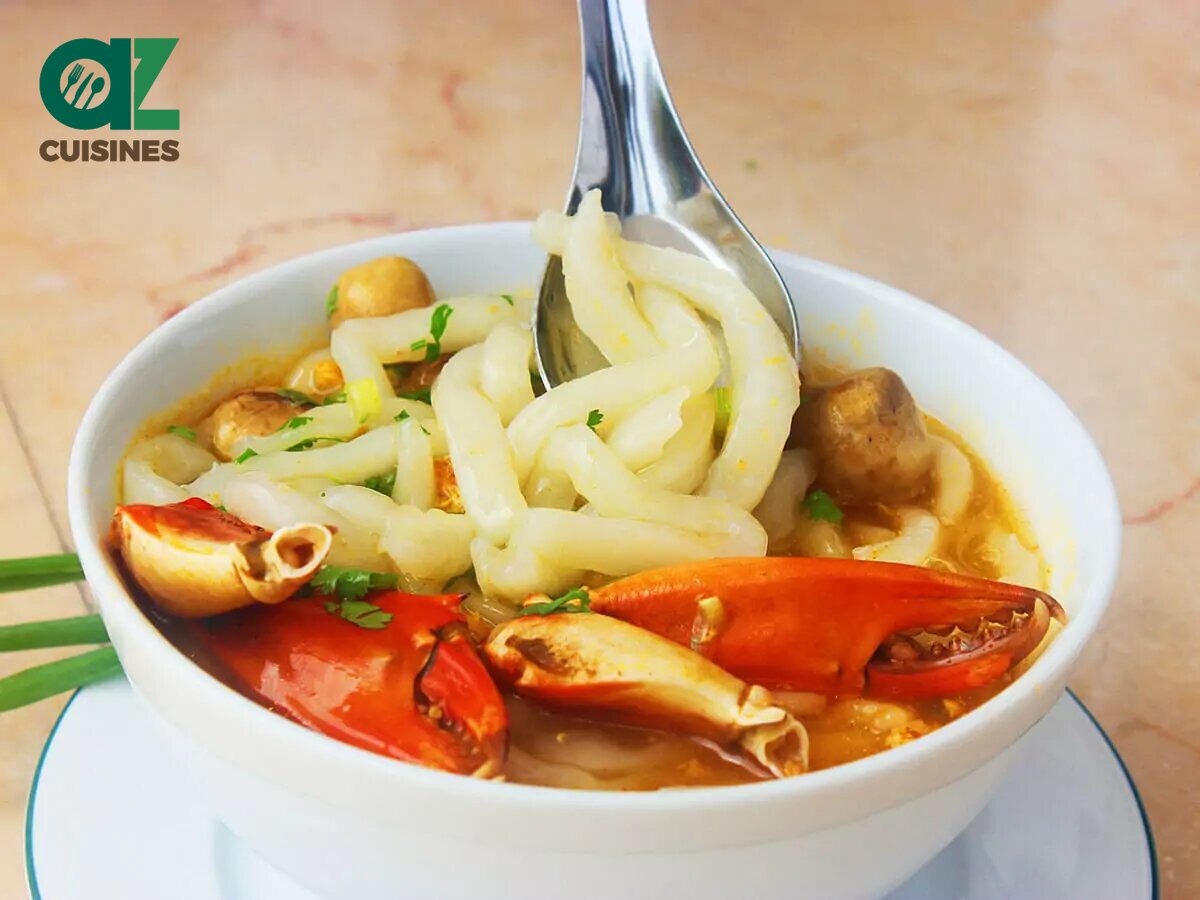
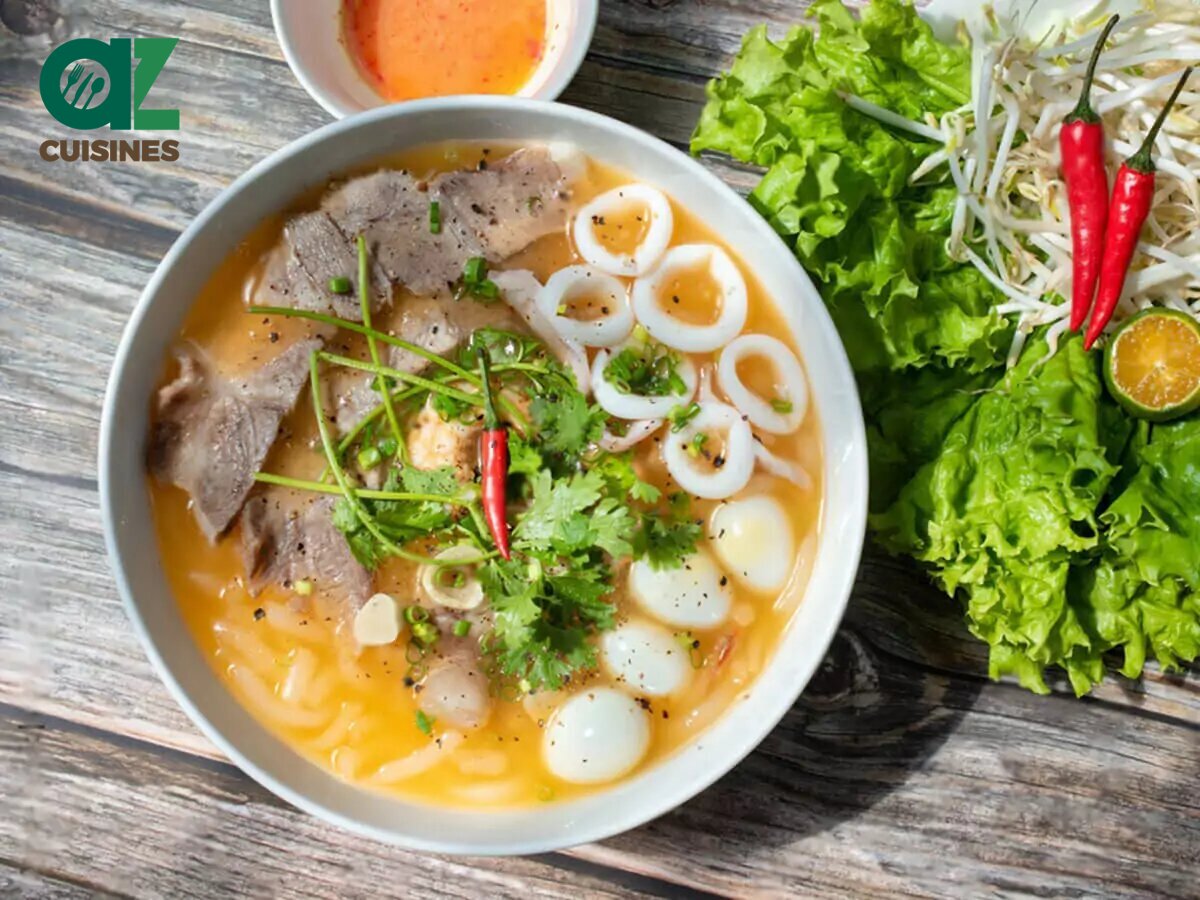

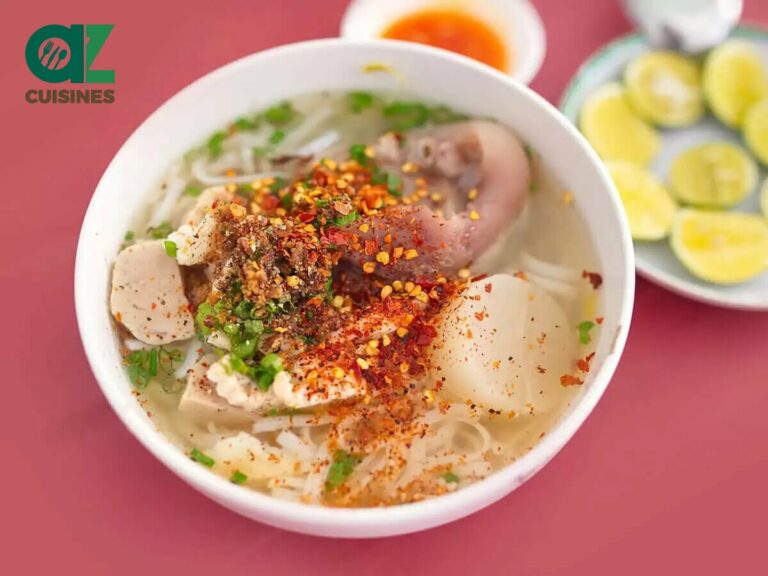
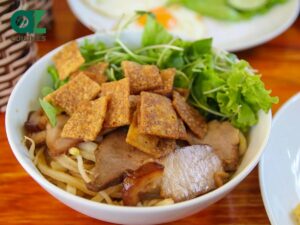
Truc Tran (Kris)
Senior Food Editor
Expertise
Home Cooking, Meal Planning, Recipe Development, Baking and Pastry, Food Editor, Cooking-video Maker, Vietnamese Food Evaluation Expert
Education
Truc Tran (Kris), an experienced food writer and editor, is great at exploring and describing global cuisines, from simple street food to fancy dining. In her writing, she skillfully mixes different flavors, cooking methods, and culinary traditions, showing the unique character of various cultures through their food and drinks. On azcuisines.com, Kris highlights her knowledge, especially in Asian cuisine and worldwide traditional dishes.